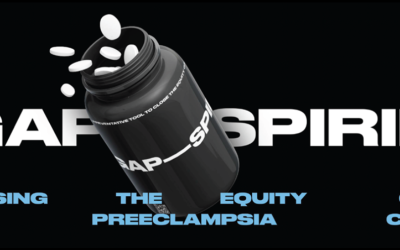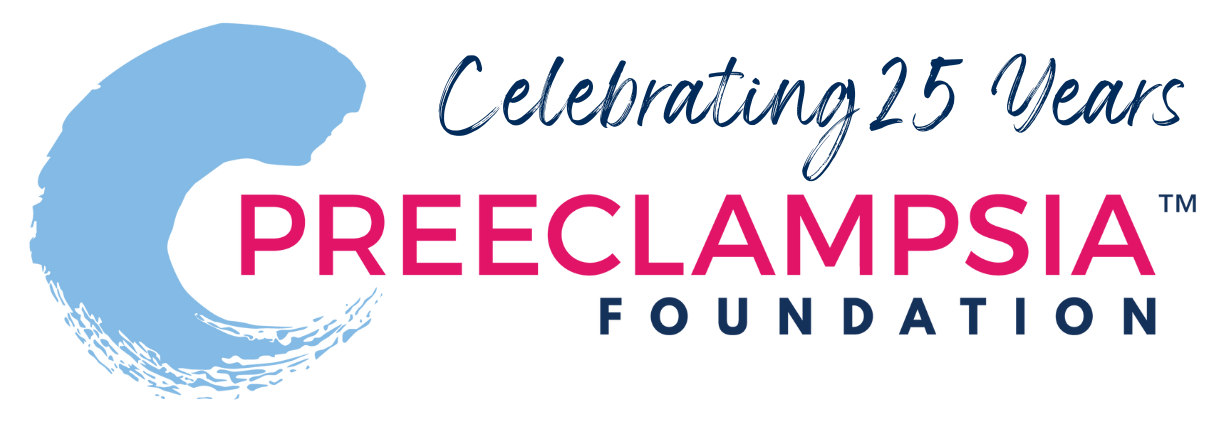
Tackling Preeclampsia, A Deadly Disease in Pregnancy
On May 3, 2013, this article appeared in IMPATIENT OPTIMISTS, a blog of the Melinda & Bill Gates Foundation.
Preeclampsia is – depending on the country– either the first, second, or third leading complication of pregnancy that causes death – either to the mother or baby. And the reported statistics do not include the morbidity and “near misses” that go unreported. Preeclampsia is a life-threatening disorder that occurs only during pregnancy and up to a few weeks after delivery. Preeclampsia and related disorders such as HELLP syndrome and eclampsia affect about one in ten pregnancies and are most often characterized by a rapid rise in blood pressure that can lead to seizure, stroke, multiple organ failure and death of the mother and/or baby.
So what can we do about it?
As executive director, I frequently talk about the Preeclampsia Foundation’s mission running on two parallel tracks: One track must be focused on what we know today – what must we do better with what we already know? Right now, we know that in order to address preeclampsia we must ensure an accurate and speedy diagnosis, followed by high quality care (which includes access to magnesium sulfate), and access to facilities and expertise to care for premature babies. The other track, however has our headlights aimed far ahead, investing in research and envisioning a future where preeclampsia is prevented or at the very least effectively treated with something other than delivery of a preterm baby.
It is with this mindset that I eagerly participated in the World Health Organization’s (WHO) invitational workshop in late April, in Geneva, to determine the research priorities for maternal and newborn health between now and 2025. With the 2015 deadline for MDG 4 and 5 looming, it’s time to start looking beyond it, particularly since it’s unlikely we will meet the maternal and infant mortality reductions specified in these Millennium Development Goals.
As home to the global headquarters for the United Nations, World Health Organization, and World Council of Churches (among others), Geneva’s multiculturalism reminds me of how important the international part of the Preeclampsia Foundation’s agenda is and how broad our perspective and sensitivity needs to be, for women and babies in Kansas and Kenya.
As those in attendance poured over hundreds of questions, I was struck by how far away the year 2025 seemed, and yet much of our debate around the hypertensive disorders of pregnancy mirrored conversations we had a decade ago. We know what works to treat preeclampsia. But we must focus on a forward-looking agenda to understand more about what causes preeclampsia—and how to prevent it. While treatment including magnesium sulfate and antihypertensives are critical components to an obstetric kit today, neither medical intervention ever bought a 24-week baby another six weeks in a healthy womb.
Surely by the time my children are having children we will understand the root cause of this disease so that interventions can prevent it from occurring in the first place, somewhere in the first trimester, or even before conception.
We call upon the international community – policymakers, researchers, clinicians and funding organizations – to not settle for incremental solutions. When countries of limited resources try to tackle preeclampsia, all energy is applied to magnesium sulfate – access, acceptance, and ability. Unfortunately, the discussion often ends there – as if that alone will solve the medical conundrum of preeclampsia/eclampsia that leaves mothers and babies ill or dead.
As a case in point, the seminal Magpie Trial was stopped early when there was overwhelming evidence in favor of the intervention— magnesium sulfate more than halved the risk of eclampsia, and reduced the risk of maternal death by almost half, compared with a placebo.
Those are strong, conclusive findings by anybody’s analysis, unless you were a family member for one of the women for whom it did NOT prevent eclampsia, or death, or severe morbidity. Or for whom a baby was stillborn or born entirely too early.
Make no mistake, magnesium sulfate – as with antihypertensives - is a critical first step and we’re greatly supportive of the thinking underway at PATH to remove obstacles to this basic standard of care. But the strength of powerful organizations and great minds is lost if that’s where we lean back and call it a good day’s work.
If it were enough, the more than 80,000 premature babies – an estimated 20 percent of preterm births that are due to preeclampsia – and hundreds of deceased mothers in the US, where medical shelves are fully stocked with this treatment, would not trouble us.
As I leave Geneva, I’m left with a feeling of optimism and impatience. I would submit that the international maternal-newborn health community would do well do adopt a similar two-pronged mission to preeclampsia and its effects on women and babies: universal access to what we know today – and thus realize improvements to our unacceptable mortality rates - with a parallel mission to create a better solution for tomorrow, recognizing that every life matters.
Related Articles
1753716089.png)
Preeclampsia survivors and their supporters from across the United States will hit the pavement on Saturday, August 23, 2025, as part of the sixth annual Promise Walk Wherever virtual event to benefit...

Even after more than twenty years, Mavis “Mae” Stephens, a 3x preeclampsia survivor, vividly remembers the challenges she faced during her pregnancy with her second son. She did everything...

Recientemente, me encontré con una publicación en las redes sociales señalando la crisis de salud maternal desde la perspectiva de una mujer negra. Una persona respondió a...

Meghan Markle is opening up about her experience with postpartum preeclampsia in the debut episode of her new podcast, Confessions of a Female Founder. In the episode with her first guest and clo...

GAP—SPIRIN campaign gets low-dose aspirin to those most at risk to help close the maternal health gap in preeclampsia ________ NEW YORK, January 23, 2025/PRNewswire/ – In recognition of...
